Tonsillectomy versus tonsillotomy for obstructive sleep-disordered breathing in children
- PMID: 32347984
- PMCID: PMC7193676
- DOI: 10.1002/14651858.CD011365.pub2
Tonsillectomy versus tonsillotomy for obstructive sleep-disordered breathing in children
Abstract
Background: Obstructive sleep-disordered breathing (oSDB) is a condition encompassing breathing problems when asleep due to upper airway obstruction. In children, hypertrophy of the tonsils and/or adenoids is thought to be the commonest cause. As such, (adeno)tonsillectomy has long been the treatment of choice. A rise in partial removal of the tonsils over the last decade is due to the hypothesis that tonsillotomy is associated with lower postoperative morbidity and fewer complications.
Objectives: To assess whether partial removal of the tonsils (intracapsular tonsillotomy) is as effective as total removal of the tonsils (extracapsular tonsillectomy) in relieving signs and symptoms of oSDB in children, and has lower postoperative morbidity and fewer complications.
Search methods: We searched the Cochrane ENT Trials Register; Central Register of Controlled Trials (CENTRAL); MEDLINE; EMBASE; CINAHL; Web of Science; ClinicalTrials.gov; ICTRP and additional sources for published and unpublished trials. The search date was 22 July 2019.
Selection criteria: Randomised controlled trials (RCTs) comparing the effectiveness of (adeno)tonsillectomy with (adeno)tonsillotomy in children aged 2 to 16 years with oSDB.
Data collection and analysis: We used standard Cochrane methods and assessed the certainty of the evidence for our pre-defined outcomes using GRADE. Our primary outcomes were disease-specific quality of life, peri-operative blood loss and the proportion of children requiring postoperative medical intervention (with or without hospitalisation). Secondary outcomes included postoperative pain, return to normal activity, recurrence of oSDB symptoms as a result of tonsil regrowth and reoperation rates.
Main results: We included 22 studies (1984 children), with predominantly unclear or high risk of bias. Three studies used polysomnography as part of their inclusion criteria. Follow-up duration ranged from six days to six years. Although 19 studies reported on some of our outcomes, we could only pool the results from a few due both to the variety of outcomes and the measurement instruments used, and an absence of combinable data. Disease-specific quality of life Four studies (540 children; 484 (90%) analysed) reported this outcome; data could not be pooled due to the different outcome measurement instruments used. It is very uncertain whether there is any difference in disease-specific quality of life between the two surgical procedures in the short (0 to 6 months; 3 studies, 410 children), medium (7 to 13 months; 2 studies, 117 children) and long term (13 to 24 months; 1 study, 67 children) (very low-certainty evidence). Peri-operative blood loss We are uncertain whether tonsillotomy reduces peri-operative blood loss by a clinically meaningful amount (mean difference (MD) 14.06 mL, 95% CI 1.91 to 26.21 mL; 8 studies, 610 children; very low-certainty evidence). In sensitivity analysis (restricted to three studies with low risk of bias) there was no evidence of a difference between the groups. Postoperative complications requiring medical intervention (with or without hospitalisation) The risk of postoperative complications in the first week after surgery was probably lower in children who underwent tonsillotomy (4.9% versus 2.6%, risk ratio (RR) 1.75, 95% CI 1.06 to 2.91; 16 studies, 1416 children; moderate-certainty evidence). Postoperative pain Eleven studies (1017 children) reported this outcome. Pain was measured using various scales and scored by either children, parents, clinicians or study personnel. When considering postoperative pain there was little or no difference between tonsillectomy and tonsillotomy at 24 hours (10-point scale) (MD 1.09, 95% CI 0.88 to 1.29; 4 studies, 368 children); at two to three days (MD 0.93, 95% CI -0.14 to 2.00; 3 studies, 301 children); or at four to seven days (MD 1.07, 95% CI -0.40 to 2.53; 4 studies, 370 children) (all very low-certainty evidence). In sensitivity analysis (restricted to studies with low risk of bias), we found no evidence of a difference in mean pain scores between groups. Return to normal activity Tonsillotomy probably results in a faster return to normal activity. Children who underwent tonsillotomy were able to return to normal activity four days earlier (MD 3.84 days, 95% CI 0.23 to 7.44; 3 studies, 248 children; moderate-certainty evidence). Recurrence of oSDB and reoperation rates We are uncertain whether there is a difference between the groups in the short (RR 0.26, 95% CI 0.03 to 2.22; 3 studies, 186 children), medium (RR 0.35, 95% CI 0.04 to 3.23; 4 studies, 206 children) or long term (RR 0.21 95% CI 0.01 to 4.13; 1 study, 65 children) (all very low-certainty evidence).
Authors' conclusions: For children with oSDB selected for tonsil surgery, tonsillotomy probably results in a faster return to normal activity (four days) and in a slight reduction in postoperative complications requiring medical intervention in the first week after surgery. This should be balanced against the clinical effectiveness of one operation over the other. However, this is not possible to determine in this review as data on the long-term effects of the two operations on oSDB symptoms, quality of life, oSDB recurrence and need for reoperation are limited and the evidence is of very low quality leading to a high degree of uncertainty about the results. More robust data from high-quality cohort studies, which may be more appropriate for detecting differences in less common events in the long term, are required to inform guidance on which tonsil surgery technique is best for children with oSDB requiring surgery.
Trial registration: ClinicalTrials.gov NCT01676181 NCT01319058.
Copyright © 2020 The Cochrane Collaboration. Published by John Wiley & Sons, Ltd.
Conflict of interest statement
Helen Blackshaw: none known.
Laurie R Springford: none known.
Lai‐Ying Zhang: none known.
Betty Wang: none known.
Roderick P Venekamp: Roderick P Venekamp is editor of Cochrane ARI and ENT, but had no role in the editorial process for this review.
Anne GM Schilder: Anne Schilder is joint Co‐ordinating Editor of Cochrane ENT, but had no role in the editorial process for this review. Her evidENT team at UCL is supported in part by the National Institute of Health Research University College London Hospitals Biomedical Research Centre. Their research is funded by the NIHR and EU Horizon2020. She is the national chair of the NIHR Clinical Research Network ENT Specialty. She is the Surgical Specialty Lead for ENT for the Royal College of Surgeons of England's Clinical Trials Initiative. She is co‐investigator on the NIHR PGfAR grant 'Defining best Management for Adults with Chronic RhinOsinusitis: the MACRO Programme'. In her role as director of the NIHR UCLH BRC Deafness and Hearing Problems Theme, she acts as an advisor on clinical trial design and delivery to a range of biotech companies.
Figures

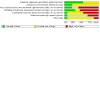
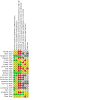
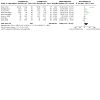
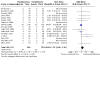

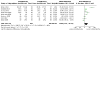
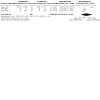
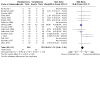
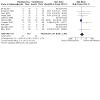
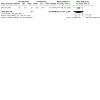
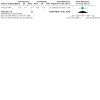
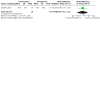

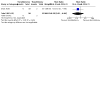
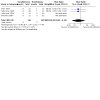
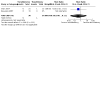

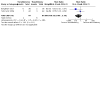
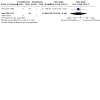
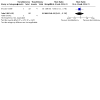
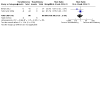

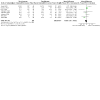
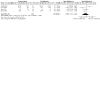
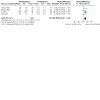
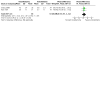
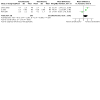

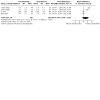
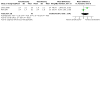
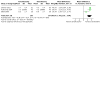
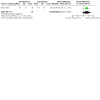


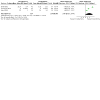

Update of
- doi: 10.1002/14651858.CD011365
References
References to studies included in this review
Beriat 2013 {published data only}
-
- Beriat GK, Ezerarslan H, Kocatürk S. Microdebrider tonsillotomy in children with obstructive tonsillar hypertrophy [Obstrüktif tonsil hipertrofisi olan cocuk hastalarda mikrodebrider tonsillotomi]. Journal of Clinical and Analytical Medicine 2013;4(6):462-5.
Bitar 2016 {published data only}
-
- Bitar MA, Rameh C, Ataya NF, Najarian A, Chakhtoura M, Abdelnoor A. Alterations in humoral immunity after partial versus total tonsillectomy: a pilot study and systematic review of literature. Journal of Pediatrics Review 2016;4(2):e6214. [DOI: 10.17795/jpr-6214] - DOI
Borgstrom 2017 {published data only}
-
- NCT01676181. ATT compared with ATE in OSAS children [Randomised surgical intervention study between adenotonsillectomy and adenotonsillotomy in children with obstructive sleep apnea syndrome]. https://clinicaltrials.gov/show/NCT01676181 (first received 30 August 2012).
Chaidas 2013 {published data only}
-
- Chaidas KS, Kaditis AG, Papadakis CE, Papandreou N, Koltsidopoulos P, Skoulakis CE. Tonsilloplasty versus tonsillectomy in children with sleep-disordered breathing: short- and long-term outcomes. Laryngoscope 2013;123:1294-9. - PubMed
Chan 2004 {published data only}
-
- Chan KH, Friedman NR, Allen GC, Yaremchuk K, Wirtschafter A, Bikhazi N, et al. Randomized, controlled, multisite study of intracapsular tonsillectomy using low-temperature plasma excision. Archives of Otolaryngology--Head & Neck Surgery 2004;130(11):1303-7. [DOI: 10.1001/archotol.130.11.1303] - DOI - PubMed
Chang 2005 {published data only}
Chang 2008 {published data only}
-
- Chang KW. Intracapsular versus subcapsular coblation tonsillectomy. Otolaryngology – Head and Neck Surgery 2008;138:153-7. - PubMed
Coticchia 2006 {published data only}
Dai 2014 {published data only}
Densert 2001 {published data only}
-
- Densert O, Desai H, Eliasson A, Frederiksen L, Andersson D, Olaison J, et al. Tonsillotomy in children with tonsillar hypertrophy. Acta Otolaryngologica 2001;121(7):854-8. - PubMed
Derkay 2006 {published data only}
-
- Derkay CS, Darrow DH, Welch C, Sinacori JT. Post-tonsillectomy morbidity and quality of life in pediatric patients with obstructive tonsils and adenoid: microdebrider vs electrocautery. Otolaryngology - Head and Neck Surgery 2006;134(1):114-20. - PubMed
Ericsson 2009 {published data only}
-
- Ericsson E, Lundeborg I, Hultcrantz E. Child behavior and quality of life before and after tonsillotomy versus tonsillectomy. International Journal of Pediatric Otorhinolaryngology 2009;73:1254-92. - PubMed
-
- Kallunki J, Marcusson A, Ericsson E. Tonsillotomy versus tonsillectomy—a randomized trial regarding dentofacial morphology and post-operative growth in children with tonsillar hypertrophy. European Journal of Orthodontics 2014;36:471-8. - PubMed
Hultcrantz 1999 {published data only}
-
- Hultcrantz E, Linder A, Markström A. Long-term effects of intracapsular partial tonsillectomy (tonsillotomy) compared with full tonsillectomy. International Journal of Pediatric Otorhinolaryngology 2005;69:463-9. - PubMed
-
- Hultcrantz E, Linder A, Markstrom A. Tonsillectomy or tonsillotomy?--A randomized study comparing postoperative pain and long-term effects. International Journal of Pediatric Otorhinolaryngology 1999;51:171-6. - PubMed
Hultcrantz 2004 {published data only}
-
- Ericsson E, Graf J, Hultcrantz E. Paediatric tonsillotomy with radiofrequency technique: long term follow-up. Laryngoscope 2006;116(10):1851-7. - PubMed
-
- Ericsson E, Wadsby M, Hultcrantz E. Pre-surgical child behaviour ratings and pain management after two different techniques of tonsil surgery. International Journal of Pediatric Otorhinolaryngology 2006;70(10):1749-58. - PubMed
-
- Hultcrantz E, Ericsson E, Graf J. Intracapsular tonsillectomy with RF surgery versus regular tonsillectomy: one-year results. Otolaryngology – Head and Neck Surgery 2004;131(2):P108.
Kordeluk 2016 {published data only}
-
- Kordeluk S, Goldbart A, Novack L, Kaplan DM, El-Saied S, Alwalidi M, et al. Randomized study comparing inflammatory response after tonsillectomy versus tonsillotomy. European Archives of Oto-rhino-laryngology 2016;273(11):3993-4001. - PubMed
-
- NCT01319058. Outcome of laser or debrider tonsillotomy versus tonsillectomy in obstructive sleep apnea [Laser or debrider tonsillotomy versus monopolar tonsillectomy in obstructive sleep apnea; inflammation AS a determinate of outcome]. https://clinicaltrials.gov/show/NCT01319058 (first received 21 March 2011).
Korkmaz 2008 {published data only}
-
- Korkmaz O, Bektas D, Cobanoglu B, Caylan R. Partial tonsillectomy with scalpel in children with obstructive tonsillar hypertrophy. International Journal of Pediatric Otorhinolaryngology 2008;72(7):1007-12. - PubMed
Li 2013 {published data only}
-
- Li D, Zhang QF, Zhang X. Partial tonsillectomy vs tonsillectomy with coblation in children with obstructive sleep apnea hypopnea syndrome. Journal of Clinical Otorhinolaryngology, Head and Neck Surgery (China) 2013;27(5):281-3. - PubMed
Lundeborg 2009 {published data only}
-
- Lundeborg I, Ericsson E, Hultcrantz E, McAllister A. Acoustic and perceptual aspects of vocal function in children with adenotonsillar hypertrophy—effects of surgery. Journal of Voice 2012;26(4):480-7. - PubMed
-
- Lundeborg I, Ericsson E, Hultcrantz E, McAllister AM. Influence of adenotonsillar hypertrophy on /s/-articulation in children--effects of surgery. Logopedics Phoniatrics Vocology 2011;36:100–8. - PubMed
-
- Lundeborg I, McAllister A, Graf J, Ericsson E, Hultcrantz E. Oral motor dysfunction in children with adenotonsillar hypertrophy--effects of surgery. Logopedics Phoniatrics Vocology 2009;34(3):111-6. - PubMed
-
- Lundeborg I, McAllister A, Samuelsson C, Ericsson E, Hultcrantz E. Phonological development in children with obstructive sleep-disordered breathing. Clinical Linguistics & Phonetics 2009;23(10):751-61. - PubMed
Park 2007 {published data only}
-
- Park A, Proctor MD, Alder S, Muntz H. Subtotal bipolar tonsillectomy does not decrease postoperative pain compared to total monopolar tonsillectomy. International Journal of Pediatric Otorhinolaryngology 2007;71(8):1205-10. - PubMed
Skoulakis 2007 {published data only}
-
- Skoulakis CE, Papadakis CE, Manios AG, Moshotzopoulos PD, Theos EA, Valagiannis DE. Tonsilloplasty in children with obstructive symptoms. Journal of Otolaryngology 2007;36(4):240-6. - PubMed
Sobol 2006 {published data only}
-
- Sobol SE, Wetmore RF, Marsh RR, Stow J, Jacobs IN. Postoperative recovery after microdebrider intracapsular or monopolar electrocautery tonsillectomy: a prospective, randomized, single-blinded study. Archives of Otolaryngology--Head & Neck Surgery 2006;132(3):270-4. - PubMed
Zhou 2016 {published data only}
-
- Zhou J, Wang Y, Li Y. Effects of different surgical procedures on immunity of children with obstructive sleep apnea hypopnea syndrome. Journal of Clinical Otorhinolaryngology, Head and Neck Surgery (China) 2016;30(5):396-8. - PubMed
References to studies excluded from this review
Babademez 2011 {published data only}
-
- Babademez MA, Yurekli MF, Acar B, Gunby E. Comparison of radiofrequency ablation, laser and coblator techniques in reduction of tonsil size. Acta Otolaryngologica 2011;131:750-6. - PubMed
Bitar 2008 {published data only}
-
- Bitar M, Rameh C. Microdebrider-assisted partial tonsillectomy: short- and long-term outcomes. European Archives of Oto-rhino-laryngology 2008;256:459-63. - PubMed
Cantarella 2012 {published data only}
-
- Cantarella G, Viglione S, Forti S, Minetti A, Pignataro L. Comparing postoperative quality of life in children after microdebrider intracapsular tonsillotomy and tonsillectomy. Auris Nasus Larynx 2012;39:407-10. - PubMed
Cao 2018 {published data only}
Esteller 2016 {published data only}
-
- Esteller E, Villatoro JC, Pedemonte G, Agüero A, Ademà JM, Girabent-Farrésc M. Surgical treatment for childhood obstructive sleep apnoea: cold-knife tonsillar dissection versus bipolar radiofrequency thermal ablation [Tratamiento quirúrgicodel síndrome de apnea obstructiva del sue˜no infantil: comparación entre adenoamigdalectomía extracapsular con bisturí frío y reducciónmediante radiofrecuencia bipolar]. Acta Otorrinolaringologica Espanola 2016;67(6):261-7. - PubMed
Gabr 2014 {published data only}
-
- Gabr SI, Harhash KA, El Fouly MS, Kamel AA, Eldwebes MM. Microdebrider intracapsular tonsillotomy versus conventional extracapsular tonsillectomy. Egyptian Journal of Otolaryngology 2014;30:220-4.
Hagerdorn 2005 {published data only}
-
- Hagerdorn H, Andratschke M. Tonsillectomy versus laser tonsillotomy for tonsillar hyperplasia in children. MMW Fortschritte der Medizin 2005;147(17):45-9. - PubMed
Oubaid Ahmed 2018 {published data only}
-
- Oubaid Ahmed N, Sultan Safaa Sahib N. Comparing postoperative morbidity after microdebrider intracapsular tonsillotomy and cold steel dissection tonsillectomy. Journal of University of Babylon, Pure and Applied Sciences 2018;26(9):225-31.
Pfaar 2007 {published data only}
-
- Pfaar O, Spielhaupter M, Schirkowski A, Wrede H, Mosges R, Hormann K, et al. Treatment of hypertrophic palatine tonsils using bipolar radiofrequency-induced thermotherapy (RFITT). Acta Otolaryngologica 2007;127:1176-81. - PubMed
Pruegsanusak 2010 {published data only}
-
- Pruegsanusak K, Wongsuwan K, Wongkittithawon J. A randomized controlled trial for perioperative morbidity in microdebrider versus cold instrument dissection tonsillectomy. Journal of the Medical Association of Thailand 2010;93(5):558-65. - PubMed
Vlastos 2008 {published data only}
-
- Vlastos IM, Parpounas K, Economides J, Helmis G, Koudoumnakis E, Houlakis M. Tonsillectomy versus tonsillotomy performed with scissors in children with tonsillar hypertrophy. International Journal of Pediatric Otorhinolaryngology 2008;72(6):857-63. - PubMed
Wireklint 2012 {published data only}
-
- Wireklint S, Ericsson E. Health-related quality of life after tonsillotomy versus tonsillectomy in young adults: 6 years postsurgery follow-up. European Archives of Oto-rhino-laryngology 2012;269:1951-8. - PubMed
References to ongoing studies
NCT01676181 {published data only}
-
- NCT01676181. Randomised surgical intervention study between adenotonsillectomy and adenotonsillotomy in children with obstructive sleep apnea syndrome. https://clinicaltrials.gov/ct2/show/NCT01676181 (first received 30 August 2012). [NCT01676181]
Additional references
Baldassari 2008
-
- Baldassari CM, Mitchell RB, Schubert C, Rudnick EF. Pediatric obstructive sleep apnea and quality of life: a meta-analysis. Otolaryngology - Head and Neck Surgery 2008;138(3):265-73. - PubMed
Baugh 2011
-
- Baugh RF, Archer SM, Mitchell RB, Rosenfeld RM, Amin R, Burns JJ, et al, American Academy of Otolaryngology-Head and Neck Surgery Foundation. Clinical practice guideline: tonsillectomy in children. Otolaryngology - Head & Neck Surgery 2011;144(1 Suppl):S1-30. [DOI: 10.1177/0194599810389949] - DOI - PubMed
Beebe 2006
-
- Beebe DW. Neurobehavioral morbidity associated with disordered breathing during sleep in children: a comprehensive review. Sleep 2006;29(9):1115-34. - PubMed
Cooper 2013
-
- Cooper L, Ford K, Bajaj Y. Paediatric adenotonsillectomy as a daycase for obstructive sleep apnoea: how we do it in a tertiary unit. International Journal of Pediatric Otorhinolaryngology 2013;77(11):1877-80. - PubMed
Erickson 2009
-
- Erickson BK, Larson DR, St Sauver JL, Meverden RA, Orvidas LJ. Changes in incidence and indications of tonsillectomy and adenotonsillectomy, 1970-2005. Otolaryngology - Head and Neck Surgery 2009;140(6):894-901. - PubMed
Eriksson 2017
-
- Eriksson M, Nilsson U, Bramhagen AC, Idvall E, Ericsson E. Self-reported postoperative recovery in children after tonsillectomy compared to tonsillotomy. International Journal of Pediatric Otorhinolaryngology 2017;96:47-54. - PubMed
Friedman 2013
-
- Friedman NR, Perkins JN, McNair B, Mitchell RB. Current practice patterns for sleep-disordered breathing in children. Laryngoscope 2013;123(4):1055-8. - PubMed
Fung 2010
-
- Fung E, Cave D, Witmans M, Gan K, El-Hakim H. Postoperative respiratory complications and recovery in obese children following adenotonsillectomy for sleep-disordered breathing: a case-control study. Otolaryngology - Head and Neck Surgery 2010;142(6):898-905. - PubMed
Gorman 2017
-
- Gorman D, Ogston S, Hussain SS. Improvement in symptoms of obstructive sleep apnoea in children following tonsillectomy versus tonsillotomy: a systematic review and meta-analysis. Clinical Otolaryngology 2017;42(2):275-82. - PubMed
Gottileb 2004
-
- Gottlieb DJ, Chase C, Vezina RM, Heeren TC, Corwin MJ, Auerbach SH, et al. Sleep-disordered breathing symptoms are associated with poorer cognitive function in 5-year-old children. Journal of Pediatrics 2004;145(4):458-64. - PubMed
Hallenstål 2017
-
- Hallenstål N, Sunnergren O, Ericsson E, Hemlin C, Hessén Söderman AC, Nerfeldt P, et al. Tonsil surgery in Sweden 2013-2015. Indications, surgical methods and patient-reported outcomes from the National Tonsil Surgery Register. Acta Otolaryngologica 2017;137(10):1096-1103. - PubMed
Higgins 2003
Higgins 2019
-
- Higgins JPT, Thomas J, Chandler J, Cumpston M, Li T, Page MJ, et al (editors). Cochrane Handbook for Systematic Reviews of Interventions version 6.0 (updated July 2019). Cochrane, 2019. Available from www.training.cochrane.org/handbook.
Kim 2017
-
- Kim JS, Kwon SH, Lee EJ, Yoon YJ. Can intracapsular tonsillectomy be an alternative to classical tonsillectomy? A meta-analysis. Otolaryngology - Head and Neck Surgery 2017;157(2):178-89. - PubMed
Koltai 2003
-
- Koltai PJ, Solares CA, Koempel JA, Hirose K, Abelson TI, Krakovitz PR, et al. Intracapsular tonsillar reduction (partial tonsillectomy): reviving a historical procedure for obstructive sleep disordered breathing in children. Otolaryngology - Head and Neck Surgery 2003;129(5):532-8. - PubMed
Lalakea 1999
-
- Lalakea ML, Marquez-Biggs I, Messner AH. Safety of pediatric short-stay tonsillectomy. Archives of Otolaryngology - Head and Neck Surgery 1999;125(7):749-52. - PubMed
Lowe 2007
-
- Lowe D, Meulen J, Cromwell D, Lewsey J, Copley L, Browne J. Key messages from the National Prospective Tonsillectomy Audit. Laryngoscope 2007;117(4):717-24. - PubMed
Marcus 2001
-
- Marcus CL. Sleep-disordered breathing in children. American Journal of Respiratory and Critical Care Medicine 2001;164(1):16-30. - PubMed
Marcus 2005
-
- Marcus CL, Katz ES, Lutz J, Black CA, Galster P, Carson KA. Upper airway dynamic responses in children with the obstructive sleep apnea syndrome. Pediatric Research 2005;57(1):99-107. - PubMed
Marcus 2012
-
- Marcus CL, Brooks LJ, Draper KA, Gozal D, Halbower AC, Jones J, et al. Diagnosis and management of childhood obstructive sleep apnea syndrome. Pediatrics 2012;130:e714-55. - PubMed
Mueller 2015
-
- Mueller J, Boeger D, Buentzel J, Esser D, Hoffmann K, Jecker P. Population-based analysis of tonsil surgery and postoperative hemorrhage. European Archives of Otorhinolaryngology 2015;272(12):3769-77. - PubMed
Nespoli 2013
-
- Nespoli L, Caprioglio A, Luigia B, Nosetti L. Obstructive sleep apnea syndrome in childhood. Early Human Development 2013;89:33-7. - PubMed
Odhagen 2016
-
- Odhagen E, Sunnergren O, Hemlin C, Hessén Söderman AC, Ericsson E, Stalfors J. Risk of reoperation after tonsillotomy versus tonsillectomy: a population-based cohort study. European Archives of Otorhinolaryngology 2016;273(10):3263-8. - PubMed
Owens 2009
-
- Owens JA. Neurocognitive and behavorial impact of sleep disordered breathing in children. Pediatric Pulmonology 2009;44(5):417-22. - PubMed
Patel 2014
-
- Patel HH, Straight CE, Lehman EB, Tanner M, Carr MM. Indications for tonsillectomy: a 10 year retrospective review. International Journal of Pediatric Otorhinolaryngology 2014;78(12):2151-5. - PubMed
Pringle 2013
-
- Pringle MB, Natesh BG, Buchanan EM. National UK survey on the assessment and surgical management of suspected paediatric obstructive sleep apnoea syndrome. International Journal of Pediatric Otorhinolaryngology 2013;77(10):1689-96. - PubMed
Robb 2009
-
- Robb PJ, Bew S, Kubba H, Murphy N, Primhak R, Rollin A-M, et al. Tonsillectomy and adenoidectomy in children with sleep related breathing disorders: consensus statement of a UK multidisciplinary working party. Clinical Otolaryngology 2009;34(1):61-3. - PubMed
Rosen 2004
-
- Rosen CL, Storfer-Isser A, Taylor HG, Kirchner HL, Emancipator JL, Redline S. Increased behavioral morbidity in school-aged children with sleep-disordered breathing. Pediatrics 2004;114(6):1640-8. - PubMed
Ruohoalho 2018
-
- Ruohoalho J, Østvoll E, Bratt M, Bugten V, Bäck L, Mäkitie A, et al. Systematic review of tonsil surgery quality registers and introduction of the Nordic Tonsil Surgery Register Collaboration. European Archives of Oto-rhino-laryngology 2018;275(6):1353-63. - PubMed
Sarny 2011
-
- Sarny S, Habermann W, Ossimitz G, Schmid C, Stammberger H. Tonsilar haemorrhage and re-admission: a questionnaire based study. European Archives of Otorhinolaryngology 2011;268(12):1803-7. - PubMed
Sathe 2017
Schwengel 2009
-
- Schwengel DA, Sterni LM, Tunkel DE, Heitmiller ES. Perioperative management of children with obstructive sleep apnea. Anesthesia & Analgesia 2009;109(1):60-75. - PubMed
Sedky 2014
-
- Sedky S, Bennett DS, Carvalho KS. Attention deficit hyperactivity disorder and sleep disordered breathing in pediatric populations: a meta-analysis. Sleep Medicine Reviews 2014;18(4):349-56. - PubMed
Shine 2005
-
- Shine NP, Coates HL, Lannigan FJ. Obstructive sleep apnea, morbid obesity, and adenotonsillar surgery: a review of the literature. International Journal of Pediatric Otorhinolaryngology 2005;69:1475-82. - PubMed
Sorin 2004
-
- Sorin A, Bent JP, April MM, Ward RF. Complications of microdebrider-assisted powered intracapsular tonsillectomy and adenoidectomy. Laryngoscope 2004;114(2):297-300. - PubMed
Spruyt 2011
Stalfors 2014
-
- Stalfors J, Ericsson E, Hemlin C, Hessén Söderman A-C, Odhagen E, Sunnergren O. Annual report 2013 of The National Tonsil Surgery Register in Sweden. Stockholm, Sweden: Karolinska University Hospital, 2014.
Stanko 2013
-
- Stanko D, Bergesio R, Davies K, Hegarty M, Ungern-Sternberg BS. Postoperative pain, nausea and vomiting following adeno-tonsillectomy - a long-term follow-up. Pediatric Anesthesia 2013;23(8):690-6. - PubMed
Statham 2006
-
- Statham MM, Elluru RG, Buncher R, Kalra M. Adenotonsillectomy for obstructive sleep apnea syndrome in young children: prevalence of pulmonary complications. Archives of Otolaryngology--Head and Neck Surgery 2006;132(5):476-80. - PubMed
Sunnergren 2017
-
- Sunnergren O, Odhagen E, Stalfors J. Incidence of second surgery following pediatric adenotonsillar surgery: a population-based cohort study. European Archives of Otorhinolaryngology 2017;274(7):2945-51. - PubMed
Tauman 2011
-
- Tauman R, Gozal D. Obstructive sleep apnea syndrome in children. Expert Review of Respiratory Medicine 2011;5(3):425-40. - PubMed
Venekamp 2015
-
- Venekamp RP, Hearne BJ, Chandrasekharan D, Blackshaw H, Lim J, Schilder AGM. Tonsillectomy or adenotonsillectomy versus non-surgical management for obstructive sleep-disordered breathing in children. Cochrane Database of Systematic Reviews 2015, Issue 10. [DOI: 10.1002/14651858.CD011165.pub2] - DOI - PMC - PubMed
Venekamp 2017
-
- Venekamp RP, Chandrasekharan D, Abel F, Blackshaw H, Kreis IA, Evans HER, et al. Research into childhood obstructive sleep-disordered breathing: a systematic review. Chest 2017;152(1):51-7. - PubMed
Wang 2015
Windfuhr 2013
-
- Windfuhr JP, Werner JA. Tonsillotomy: it's time to clarify the facts. European Archives of Otorhinolaryngology 2013;270(12):2985-96. - PubMed
Windfuhr 2015
-
- Windfuhr JP, Savva K, Dahm JD, Werner JA. Tonsillotomy: facts and fiction. European Archives of Otorhinolaryngology 2015;272(4):949-69. - PubMed
Zhang 2017
-
- Zhang LY, Zhong L, David M, Cervin A. Tonsillectomy or tonsillotomy? A systematic review for paediatric sleep-disordered breathing. International Journal of Pediatric Otorhinolaryngology 2017;103:41-50. - PubMed
References to other published versions of this review
Publication types
MeSH terms
Associated data
Grants and funding
LinkOut - more resources
Full Text Sources
Medical
Research Materials
Miscellaneous

